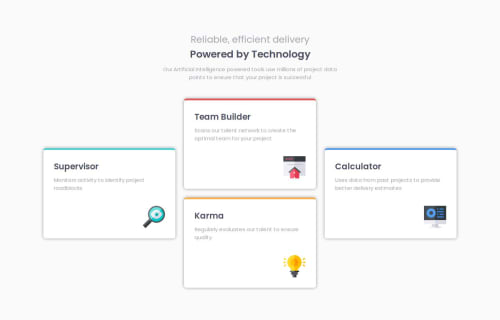Submitted about 1 year agoA solution to the Four card feature section challenge
Four card feature section
accessibility, pure-css
@SunilBaghel002

Solution retrospective
What are you most proud of, and what would you do differently next time?
Next time, i would made more understandable website with better design
What challenges did you encounter, and how did you overcome them?I encounter challenges while making website responsive and overcome using flexbox and grid in css.
What specific areas of your project would you like help with?I like fully responsiveness in this website
Code
Loading...
Please log in to post a comment
Log in with GitHubCommunity feedback
No feedback yet. Be the first to give feedback on Sunil's solution.
Join our Discord community
Join thousands of Frontend Mentor community members taking the challenges, sharing resources, helping each other, and chatting about all things front-end!
Join our Discord